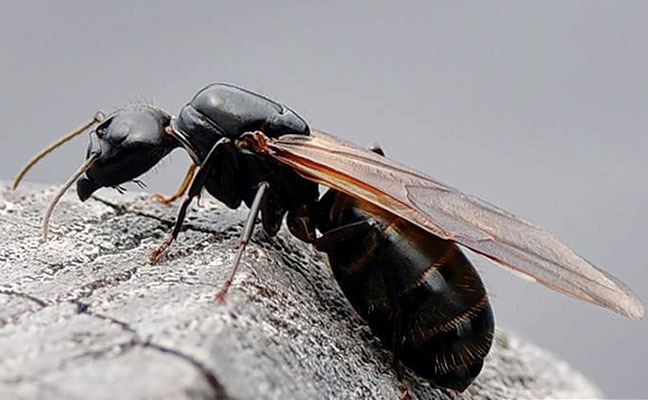Carpenter ants (Camponotus spp.) are important pests. In some regions, they are the primary wood-destroying insect (WDI) encountered by pest management professionals (PMPs). The textbook signs of an infestation include damaged wood and evidence of frass (wood shavings), which often will lead technicians to the source of the infestation: a nest associated with moisture-damaged wood outdoors. Inside structures, however, carpenter ants often will build satellite nests inside existing voids, which may be harder to find and treat.
The primary nest associated with a carpenter ant colony typically is located outdoors, found inside dead trees, logs or neglected woodpiles. As a colony grows, satellite nests are established; mature larvae, pupae and adults are moved to these secondary locations. Primary nests typically are found outside where moisture levels are greater, due to the humidity levels needed for egg and larval development. Indoor satellite nests don’t harbor a queen or eggs, so they can be established in drier locations inside a structure.
Structural voids represent prime real estate for carpenter ants to call home. Spaces behind paneling, hollow parts of furniture, curtain rods, hollow interior doors, and other void spaces in a building all can be utilized as a secondary nest location by carpenter ants. Excavating sound wood to create nesting voids takes time and energy to complete, so carpenter ants often use existing voids instead.
Locating nests in void spaces can be difficult because frass is not always present. Instead, look for dead insects or insect parts, or follow foraging workers back to the nest entrances during your inspection. Through careful observation, technicians can locate carpenter ant satellite nests in locations not associated with damaged wood, resulting in a faster solution to a customer’s ant infestation.
Contributor Dr. Jim Fredericks, VP of technical and regulatory affairs for the National Pest Management Association (NPMA), can be reached at jfredericks@pestworld.org.

Leave A Comment